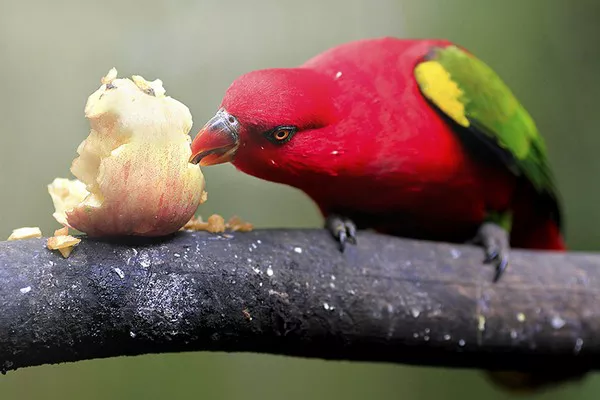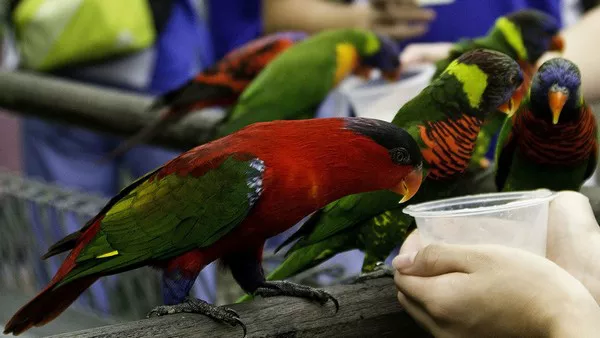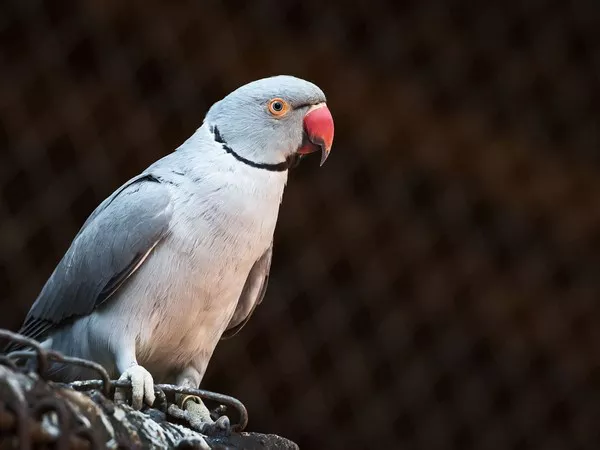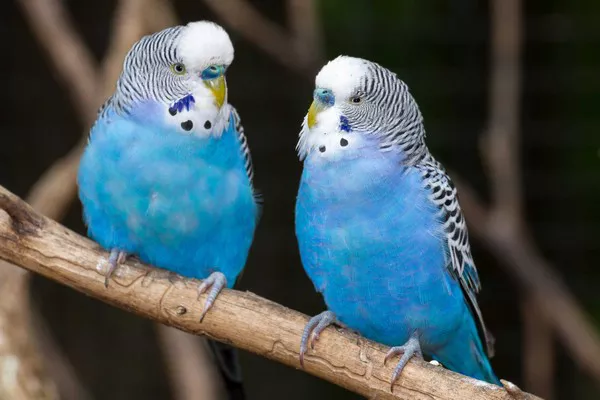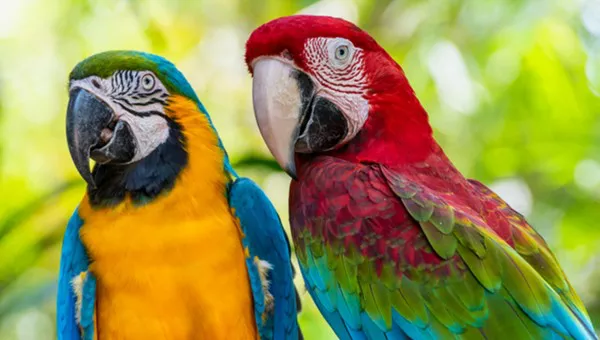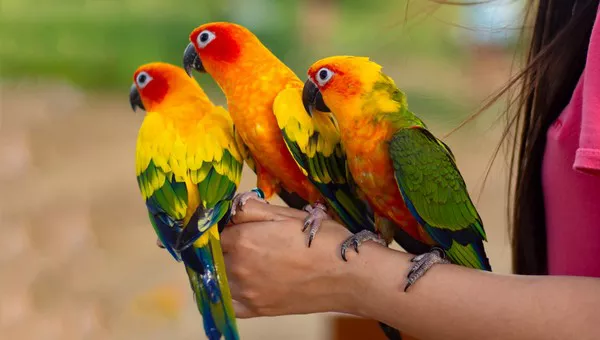Sun conures (Aratinga solstitialis) are some of the most vibrant and captivating birds found in the pet trade. With their stunning array of colors, including shades of yellow, orange, green, and hints of blue, it’s no wonder they capture the hearts of bird lovers around the world. While many are drawn to these charming parrots for their playful personalities and engaging behavior, one of the most intriguing aspects of their lives is their changing plumage.
In this article, we will delve into the fascinating world of sun conures, exploring when and how they change color throughout their lives, the factors influencing these changes, and what owners can do to ensure their feathered friends maintain vibrant and healthy plumage.
The Beauty of Sun Conures
Before we dive into the details of color changes, let’s take a moment to appreciate what makes sun conures so extraordinary. Native to the tropical regions of South America, particularly in the northeastern parts of Brazil, these birds are a feast for the eyes. They are medium-sized parrots, typically measuring between 12 to 14 inches in length, and their plumage is a striking blend of yellow, orange, and green. The vivid yellow and orange feathers resemble the sun itself, giving them their common name.
Sun conures are not only beautiful but also highly social creatures. They thrive in flocks in the wild and are known for their loud, cheerful calls and playful antics. Their vibrant coloration is a crucial aspect of their social interactions, serving as a form of communication among flock members. Understanding when and how these color changes occur adds depth to our appreciation of these remarkable birds.
The Lifecycle of a Sun Conure
To understand when sun conures change color, we must first explore their lifecycle. Like all birds, sun conures undergo several developmental stages: from hatchlings to fledglings and eventually to adulthood. Each of these stages comes with its own unique set of color characteristics.
Hatchlings: The Beginning
When sun conures hatch, they are completely helpless and lack feathers. These tiny chicks are covered in a fine layer of down, which is typically a grayish or whitish color. At this stage, their appearance is far from the vibrant colors they will display later in life.
Juvenile Stage: The First Color Changes
As the chicks grow, they enter the juvenile stage. This phase usually occurs around 4 to 6 weeks of age, during which they begin to develop their first feathers. Interestingly, juvenile sun conures display a more muted coloration compared to adults. Their feathers are often a mix of green, yellow, and gray, lacking the brilliant hues that characterize mature birds.
During this time, owners may notice a gradual brightening of the feathers. The process of feather molting begins as the birds shed their old down feathers and replace them with new ones. This stage lasts until they are about 6 months old, at which point their color transformation becomes more pronounced.
Adulthood: The Full Spectrum of Color
Around 6 months to 1 year of age, sun conures reach sexual maturity, and their plumage undergoes a dramatic transformation. This is when their adult coloring begins to emerge fully. The bright yellows, rich oranges, and deep greens become more vibrant and distinct, making them a visual spectacle.
Male sun conures typically exhibit more vibrant coloration than females, although this can vary. Males often have more pronounced orange and yellow feathers, while females may display slightly duller colors. This dimorphism can be subtle, and without DNA testing, it may be challenging to determine the sex of the bird based solely on coloration.
Aging and Color Changes
As sun conures age, their feather color may begin to change once again. While they maintain their vibrant appearance for several years, it’s not uncommon for older birds to experience slight fading of their plumage. Factors like diet, health, and exposure to sunlight play crucial roles in maintaining feather quality.
Factors Influencing Color Changes
Understanding the factors that influence the color changes in sun conures is essential for any prospective owner. Let’s explore some of the key elements that can affect their plumage:
Diet
A balanced diet is vital for maintaining a sun conure’s vibrant colors. These birds thrive on a diet rich in fruits, vegetables, seeds, and pellets. Nutritional deficiencies can lead to dull feathers and poor overall health. For example, a lack of vitamin A can cause discoloration and dullness in plumage.
Providing a variety of colorful fruits and vegetables not only keeps your bird healthy but also promotes vibrant feathers. Foods such as carrots, bell peppers, and leafy greens are excellent choices for enhancing their color.
Sunlight
Sunlight is another significant factor in maintaining the vibrancy of sun conures’ feathers. In their natural habitat, these birds bask in the warm sun, which helps their feathers stay healthy and colorful. Pet owners should ensure their birds have access to natural sunlight or provide appropriate UV lighting indoors.
Exposing sun conures to sunlight helps them synthesize vitamin D, which is essential for calcium absorption and overall health. Just be cautious to avoid overheating or sunburn, as birds can be sensitive to excessive heat.
Stress and Health
Stress can have a detrimental effect on a sun conure’s overall well-being and coloration. Birds are sensitive creatures, and changes in their environment, social dynamics, or routines can lead to stress. Signs of stress include feather plucking, changes in vocalization, and a decline in activity levels.
Regular veterinary check-ups are essential to monitor your bird’s health. Conditions such as feather mites or bacterial infections can lead to changes in feather quality. Addressing health issues promptly can help maintain vibrant coloration.
Social Interactions and Color Changes
Sun conures are highly social birds, and their interactions with their owners and other birds can influence their color and overall demeanor. A happy, well-socialized bird is more likely to display its brilliant colors than a stressed or lonely one.
The Role of Play and Enrichment
Providing plenty of toys, social interaction, and mental stimulation can help reduce stress and enhance the bird’s natural beauty. Activities like foraging, climbing, and playing with other birds or humans promote a healthy and active lifestyle, contributing to better feather health.
Flock Dynamics
In the wild, sun conures live in flocks, and their interactions play a crucial role in their social behavior. When kept in pairs or small groups, sun conures may display more vibrant colors due to the positive influences of companionship and social bonding.
Breeding Season and Color Changes
During breeding season, sun conures may also exhibit more pronounced coloration. This is often linked to hormonal changes that prepare them for mating. Owners may notice their birds becoming more vocal and active during this time, further enhancing their striking appearance.
The Molting Process
Understanding the molting process is key to comprehending how and when sun conures change color. Molting is a natural, cyclical process where birds shed old feathers and grow new ones. This process can be influenced by seasonal changes, age, and overall health.
Timing of Molting
Sun conures typically molt once or twice a year. The timing can vary, but it usually coincides with changes in daylight hours and temperature. During molting, owners may notice that their bird’s feathers look ragged or dull. This is a normal part of the process, and new feathers will soon emerge.
Caring for a Molting Bird
While your sun conure is molting, it’s essential to provide extra care. Ensure they receive a nutritious diet rich in vitamins and minerals to support feather growth. Offering a stress-free environment and engaging activities can also help your bird through this transitional phase.
Observing Color Changes: A Guide for Owners
As a sun conure owner, observing the changes in your bird’s coloration can be a rewarding experience. Here are some tips for tracking and understanding these transformations:
Keep a Journal
Consider keeping a journal to note changes in your bird’s plumage, behavior, and health. This can help you identify patterns and ensure your bird is thriving.
Photograph Progress
Taking regular photos of your sun conure can provide a visual record of their color changes over time. This can be particularly fun to look back on as your bird matures.
Monitor Health
Pay attention to any changes in behavior or feather quality. If you notice excessive feather loss, dullness, or other health concerns, consult an avian veterinarian to ensure your bird is healthy.
Conclusion
The journey of a sun conure from a hatchling to a vibrant adult is a remarkable transformation. Understanding when and how these beautiful birds change color adds to the appreciation of their unique beauty. Factors such as diet, sunlight, social interactions, and health play significant roles in maintaining their stunning plumage.
As you embark on your journey as a sun conure owner, remember that these vibrant creatures thrive in environments filled with love, care, and stimulation. By providing the right care, you can help your sun conure flourish and display its beautiful colors for years to come. The sight of a happy, healthy sun conure is a reward in itself—a vibrant reminder of the joy that these incredible birds bring into our lives.
Related Topics:

